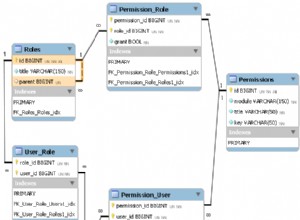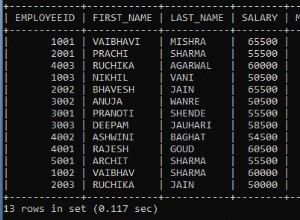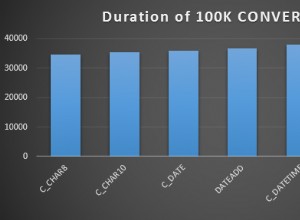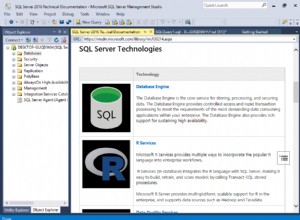Bene, alla fine ho trovato la seguente soluzione. È il modo in cui ho scoperto di supportare alberi multi-radice e anche digrafi ciclistici.
create table #ObjectRelations
(
Id varchar(20),
NextId varchar(20)
)
/* Cycle */
/*
insert into #ObjectRelations values ('A', 'B')
insert into #ObjectRelations values ('B', 'C')
insert into #ObjectRelations values ('C', 'A')
*/
/* Multi root */
insert into #ObjectRelations values ('G', 'B')
insert into #ObjectRelations values ('A', 'B')
insert into #ObjectRelations values ('B', 'C')
insert into #ObjectRelations values ('B', 'X')
insert into #ObjectRelations values ('C', 'E')
insert into #ObjectRelations values ('C', 'D')
insert into #ObjectRelations values ('E', 'F')
insert into #ObjectRelations values ('D', 'F')
declare @startIds table
(
Id varchar(20) primary key
)
;WITH
Ids (Id) AS
(
SELECT Id
FROM #ObjectRelations
),
NextIds (Id) AS
(
SELECT NextId
FROM #ObjectRelations
)
INSERT INTO @startIds
/* This select will not return anything since there are not objects without predecessor, because it's a cyclic of course */
SELECT DISTINCT
Ids.Id
FROM
Ids
LEFT JOIN
NextIds on Ids.Id = NextIds.Id
WHERE
NextIds.Id IS NULL
UNION
/* So let's just pick anyone. (the way I will be getting the starting object for a cyclic doesn't matter for the regarding problem)*/
SELECT TOP 1 Id FROM Ids
;WITH Objects (Id, NextId, [Level], Way) AS
( -- This is the 'Anchor' or starting point of the recursive query
SELECT rel.Id,
rel.NextId,
1,
CAST(rel.Id as VARCHAR(MAX))
FROM #ObjectRelations rel
WHERE rel.Id IN (SELECT Id FROM @startIds)
UNION ALL -- This is the recursive portion of the query
SELECT rel.Id,
rel.NextId,
[Level] + 1,
RecObjects.Way + ', ' + rel.Id
FROM #ObjectRelations rel
INNER JOIN Objects RecObjects -- Note the reference to CTE table name (Recursive Join)
ON rel.Id = RecObjects.NextId
WHERE RecObjects.Way NOT LIKE '%' + rel.Id + '%'
)
SELECT DISTINCT
Id,
NextId,
[Level]
FROM Objects
ORDER BY [Level]
drop table #ObjectRelations
Potrebbe essere utile per qualcuno. È per me =PGrazie




